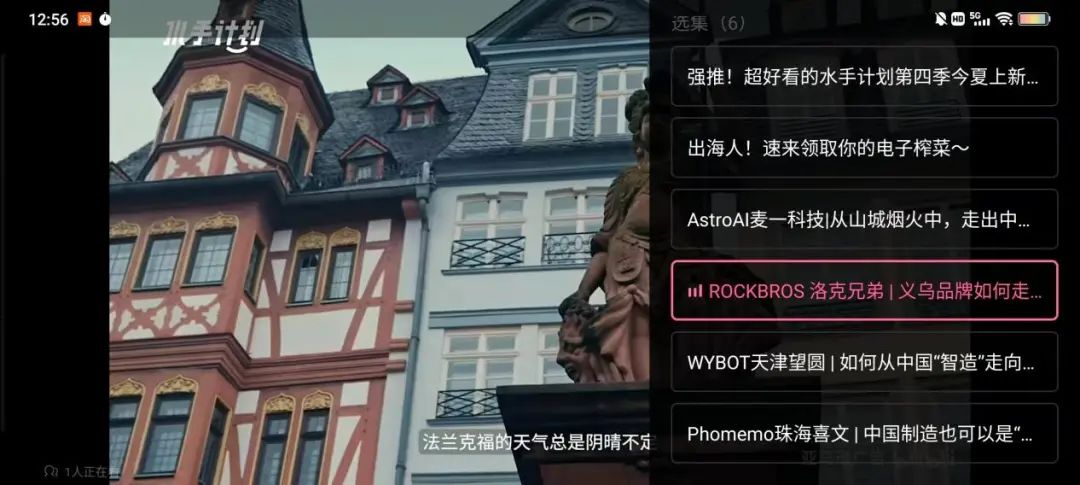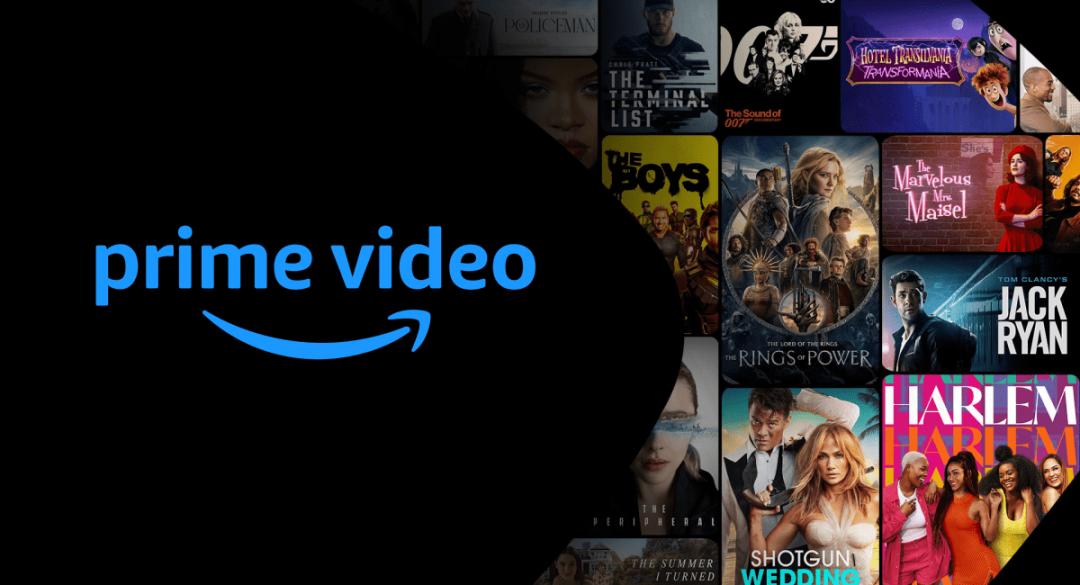"Amazon Desperately Needs" Chinese Sellers
![]() 09/25 2024
09/25 2024
![]() 509
509

Text / Qi Gong
More than 500 years ago, when Portuguese navigator Bartolomeu Dias's fleet arrived at the Cape of Good Hope in southern Africa, it was a sunny and calm day. The crew stared in awe at this magnificent cape that had been hidden for many centuries and couldn't help exclaiming, "We see not just a cape, but a new world."
For today's vast enterprises mired in "involution," going overseas is a process of seeking the "Cape of Good Hope" and opening up a "new world." It represents definitive business opportunities and the greatest common divisor of the times.
However, higher certainty often corresponds to fiercer competition. This means that sellers must plan ahead, gain deep insights into the difficulties, pain points, and bottlenecks in the current trend, deploy meticulously, or find suitable cross-border e-commerce platforms to achieve their goals of setting sail and braving the waves.
01 The Dangers Lurking Beneath the Surface of Brand Expansion Overseas
From the "three-come-one-supplement" policy catalyzed by the WTO's easterly winds in 2001 to selling goods through agents and distributors in various countries around 2008, enterprises have had different interpretations and approaches to "going global" under different social contexts.
However, in today's era of oversupply, the core elements of commercial competition have undergone significant changes, shifting from a tug-of-war between productivity and distribution channels to a battle for consumer mindshare. Going overseas is no longer just a brute-force output of production capacity or the proliferation of a low-end "Made in China" image; rather, it is a journey and a rebranding centered around brand building.
According to a report released by iResearch, as of 2023, China's cross-border e-commerce market size has surpassed RMB 10 trillion, and it is expected to maintain an annual growth rate of over 20% in the coming years. In other words, the "ceiling" for brand expansion overseas is high, and the path is long. However, it cannot be overlooked that beneath the seemingly calm waters lurk many solid "reefs," or difficulties, pain points, and bottlenecks.
? Brand expansion overseas is a systematic endeavor. Ideally, consumers could jump straight from "not knowing the brand" to "loyal brand users," but in reality, many steps are omitted, involving cognition, interest, consideration, evaluation, purchase, logistics, after-sales service, etc. Can enterprises keep pace, make meticulous arrangements, and flexibly use promotional tools?
? Nowadays, consumer preferences are volatile, group images are blurred, and information is fragmented. With many options and short attention spans, consumers' attention often shifts rapidly between events, news, games, and apps, making brand expansion overseas more challenging than ever before.
Can enterprises target effectively and find marketing platforms with the broadest coverage and relatively high ROI? Furthermore, can they comprehensively deploy strategies to reach customer touchpoints?
? Although overseas markets are promising lands flowing with milk and honey, they are also treacherous "Bermuda Triangles" with raging waves and numerous crises. There are numerous past failures of blindly navigating through these treacherous waters in pursuit of trends.
Most of our enterprises are embarking on their first overseas expansion. In such circumstances, obtaining a "navigation chart" for reference and a "periscope" to glimpse external developments and provide assistance are particularly crucial to avoid getting lost at sea or being stranded or capsized by storms.
In fact, these three "reefs" are potential stumbling blocks for almost all enterprises. How to clear them will determine the outcome of brand expansion overseas.
The most convenient approach is to leverage existing strengths, such as by establishing a foothold in international platforms like Amazon, TikTok, AliExpress, Shein, and Temu, grasping breakthroughs and entry points, reducing the risks of brand expansion overseas, and shortening the voyage.

Among them, Amazon, as the leading player in the industry and an established European and American giant, is generally a must-choose, or even the first choice, for businesses looking to expand internationally.
However, in recent years, the fierce competition from the rising platforms like TikTok, AliExpress, Shein, and Temu has severely squeezed Amazon's market share and diluted its influence among Chinese sellers.
As a result, the usually arrogant Amazon has had to humble itself and resort to more tactics to court Chinese sellers.
02 The Ambitions Behind Amazon's "Sailor Program"
On August 28, Amazon's "Sailor Program" returned for its fourth season with a bang.
According to the official announcement, this season of the "Sailor Program" covers seven cases: the automotive lifestyle brand AstroAI (Maiyi Technology), the cycling and outdoor gear brand ROCKBROS (Luoke Brothers), the pool robot brand Tianjin Wangyuan (WYBOT), the portable printer brand Zhuhai Xiwen (Phomemo®), the trendy tool brand HOTO (Xiaohou), the speed cube brand Guangzhou Gancube, and the rechargeable hand warmer brand Changsha Jiemao (Ocoopa).

These seven cases, while ostensibly outlining a "navigation chart" for brand expansion overseas, actually conceal Amazon's ambitions to court Chinese sellers: cast a bait to lure them in.
For instance, Tianjin Wangyuan (WYBOT) daringly experimented with Amazon Advertising's new tool, leveraging its comprehensive exposure and efficient user reach. Not only did it exceed sales targets during Prime Day, but it also successfully established a partnership with a Spanish blogger, amplifying its brand voice and audience reach for its flagship model while exploring a new path of localization.
Similarly, Gancube, deeply entrenched in the speed cube ecosystem, and Changsha-based rechargeable hand warmer brand Ocoopa have leveraged Amazon Advertising's comprehensive strategies to improve their campaign performance and creative materials. Gancube has doubled its sales in just three years on Amazon, surpassing USD 10 million annually. Meanwhile, Ocoopa discovered unexpected niches like e-sports and assistive medical devices through Amazon customer feedback and analytics, precisely targeting potential audiences and stimulating their purchasing desires, breaking through seasonal product boundaries and enhancing its brand image.
However, in reality, these cases are no different from the demos frequently presented by TikTok, AliExpress, Shein, and Temu, offering little surprise to sellers.
More importantly, compared to TikTok, AliExpress, Shein, and Temu, while Amazon boasts more native global genes and advantages, it falls short in terms of understanding and proximity to Chinese sellers.
On the one hand, as mentioned earlier, brand expansion overseas is a systematic endeavor involving a long chain with multiple links, including cognition, interest, consideration, evaluation, purchase, logistics, and after-sales service. It requires cross-temporal, cross-cultural, cross-linguistic, and cross-regulatory communication.
In response to such "chronic illnesses," domestic cross-border platforms have long offered semi-managed and fully-managed services, attracting a large number of sellers with their expertise. Amazon, on the other hand, only introduced its semi-managed Amazon Supply Chain Solution (Supply Chain by Amazon) in late 2023, where merchants retain autonomy in product selection, pricing, and strategies while outsourcing logistics to the platform. As for the more "hassle-free" fully-managed service, Cindy Tai, Amazon's Vice President of Global Selling and Managing Director of Amazon Global Selling Asia Pacific, has stated that Amazon will not pursue this option.
Furthermore, Node Finance has observed that the competition for high-quality industrial clusters and low-tier city sellers has been intense among AliExpress, Shein, and Temu for three to four years, while Amazon only began exploring this market in late 2023 and has yet to make significant progress. According to media reports, Amazon's team in China is primarily responsible for global selling operations with limited internal authority, indirectly leading to slower responses to seller issues, operational tools, and advertising campaigns.
On the other hand, following the 2021 "account suspension" incident, many sellers realized the risks of over-reliance on Amazon and gradually adopted a multi-channel strategy. While encouraging sellers to operate "compliantly" is Amazon's responsibility, the challenge lies in mitigating the "aftermath" and retaining hesitant Chinese merchants after the "thunderous wrath."
03 Is Sponsored TV Up to the Challenge?
Brand expansion overseas is not a simple task but rather a comprehensive methodology and dynamic process. Therefore, merely relying on the "navigation charts" drawn by predecessors is insufficient; it also requires various "periscopes" for support.
Upon reviewing the seven cases presented in the "Sailor Program," it is evident that Amazon Advertising plays a pivotal role behind the scenes.
What "periscopes" does Amazon Advertising provide for enterprises? And how do these "periscopes" function? These are the topics we will discuss next, which can also be seen as weapons to address the difficulties, pain points, and bottlenecks of brand expansion overseas.
We can consider Amazon Advertising as a "treasure trove" filled with various "treasures," including search ads, Prime Video ads, other streaming TV ads, and generative AI. Enterprises can configure and combine these tools as needed to accomplish critical actions in brand expansion overseas.
Among these "treasures," "Streaming TV Ads" (Sponsored TV) has received significant promotion from Amazon Advertising lately.
According to Node Finance, "Streaming TV Ads" is backed by Prime Video, which boasts a vast library of critically acclaimed content, such as "The Marvelous Mrs. Maisel," "Mr. & Mrs. Smith," and "Creed III."
Prime Video is currently one of the most popular video platforms globally, under Amazon's umbrella. Viewers from all seven continents watch popular shows like "The Marvelous Mrs. Maisel" and "The Boys," blockbusters like "Creed III," and sporting events like "Thursday Night Football" in the US and Premier League matches in the UK.

Source: Prime Video Official Website
In other words, supported by Prime Video, "Streaming TV Ads" reaches a vast audience worldwide. Data shows that Prime Video ads reach an average of 200 million global customers each month.
On the optimistic side, leveraging Prime Video's extensive high-quality content and diverse communication channels, Amazon Advertising can implement saturation attacks in a short period, enhancing the brand awareness of overseas expansion and fostering a stronger sense of identity and belonging among users, naturally attracting sellers.
However, a dialectical analysis reveals a more nuanced picture.
Firstly, the cost is high: According to seller feedback, the cost of "Streaming TV Ads" is substantial. The bid for every 1,000 impressions is not less than USD 10, and the bid must be less than half of the budget. To achieve effective ad placement, the recommended minimum budget is USD 20, with a typical range of USD 150-200. Compared to ad spend on AliExpress, Shein, and Temu, this represents a significant investment.
Secondly, category limitations: Some sellers believe that "Streaming TV Ads" are more suitable for products with high brand equity, like health supplements, and may have limited effectiveness for other categories. This is unfriendly to most Chinese sellers embarking on their first overseas expansion and still in the brand-building stage.
Thirdly, the burden of long-term investment: "Streaming TV Ads" require continuous investment to maintain ad placement and exposure, with tangible results difficult to achieve in the short term. This poses a significant challenge for small sellers with limited budgets who may struggle to sustain long-term, substantial promotional expenses.
When compared horizontally, even with Amazon Advertising's "treasure trove" at hand, including search ads, Prime Video ads, other streaming TV ads, and generative AI, none of these tools are exclusive. They are readily available on TikTok, AliExpress, Shein, and Temu, often at more affordable prices.
Ultimately, everyone is on an equal footing in the race to capture sellers' hearts and facilitate brand expansion overseas.
In summary, neither the "Sailor Program" nor "Streaming TV Ads" stand out significantly in terms of differentiation or persuasiveness. In an environment where upstarts are rising, Amazon needs to demonstrate greater sincerity and intensity to attract more Chinese sellers.
* The lead image is generated by AI






